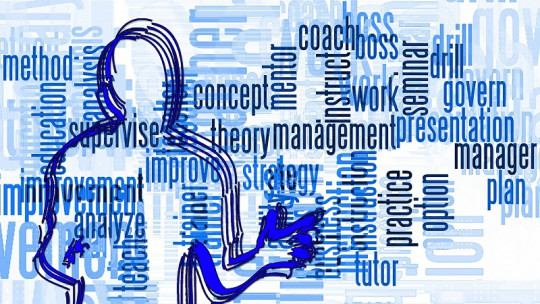
Coaching is an area of professional performance that is increasingly gaining more importance and becoming more diversified; However, there are still many people who do not even have a rough idea about what the coach’s tasks and goals are. To resolve these types of doubts, in this article We will summarize how coaching works faced with the type of problems in which it is usually applied.
What is coaching?
First of all, it is important to address a definition, even if it is summarized, about the term “coaching”, which is the core of the coach’s work. This is a set of practices designed to help individuals and groups achieve their goals, especially in the area of professional and/or personal development.
In this sense, coaching analyzes each particular case, identifying both needs and problems to be resolved as well as potential opportunities for improvement, and establishes a coach-coachee communication flow that allows the results of the applied strategies to be evaluated in real time. Now, it is important to distinguish between coaching and applied psychology: while historically the second has focused on helping to solve problems that are damaging people’s quality of life (mental health disorders, difficulties in school performance…), Coaching rules out intervening in those problems that require the intervention of health or educational professionals, and focuses on areas such as personal development, leadership and team management dynamics, vocational exploration, the development of communication skills, etc
What does coaching work?
The first thing to keep in mind is that the solutions applied by the coach depend on their area of specialization, which delimits the type of needs they address. For example, sometimes we work with teams in the context of companies or organizations, helping to improve their communication and coordination processes; In other cases, CEOs, executives and department directors are trained to develop their leadership skills; There are also coaches who work focusing on personal development processes regardless of the coachee’s work profile…
On the other hand, although what we have seen so far are the “branches” of coaching, it is also There are different approaches from which to work as a coach: Systemic coaching is not the same as ontological coaching, for example. But leaving these categories aside, it is possible to identify common aspects in the functioning of coaching in general. Let’s see what they are.
1. Detection of improvement potential
The starting point of the coaching process arises from the identification of an opportunity to improve the current situation, proposing positive measures. In general, Coaches focus on the present and project it into the future without giving great importance to the remote past of the people or the teams they help, since in the here and now the elements that allow people to explore their potential are already present.
2. Boosting self-knowledge
Another of the pillars of coaching operation consists of applying self-knowledge strategies. Are They allow the coachee to connect with their real values and interests instead of always acting under external pressures.
3. Application of dynamics to reinforce communication and mutual trust
This is especially important in organizational coaching or team coaching, as it allows you to avoid communication blocks and the appearance of misunderstandings. However, it is also key in coaching focused on individuals, since we must ensure that the coach and coachee are on the same page and establish an alliance from which to speak openly about the challenges to be faced, the values behind the motivations. of the person, and the priorities to take into account.
4. Application of distinctions
Distinctions are category systems that allow us to differentiate between concepts that, until then, had been confused each other and therefore made progress towards the objective difficult. This is a process inspired by cognitive restructuring used in psychology.
5. Training in emotional self-regulation skills
Knowing how to modulate one’s own emotions and recognize the emotions of others is important to adapt to the social context in which one lives, something that is always one of the pillars of any coaching process. We must not forget that personal and professional development always takes place within the framework of a relationship with other people and with oneself.
6. Training in motivation and/or self-motivation techniques
Finally, the application of techniques that enhance motivation is another of the keys to how coaching works, since helps to commit to the defined objective in the medium and long term in the first phase of the process. To achieve this, routines are used such as the creation of a personal diary, very defined schedule guidelines to delimit the beginning and end of each task, the subdivision of the objectives to be achieved into several simpler and short-term challenges, etc.
If you want to know more about coaching contact CEC








